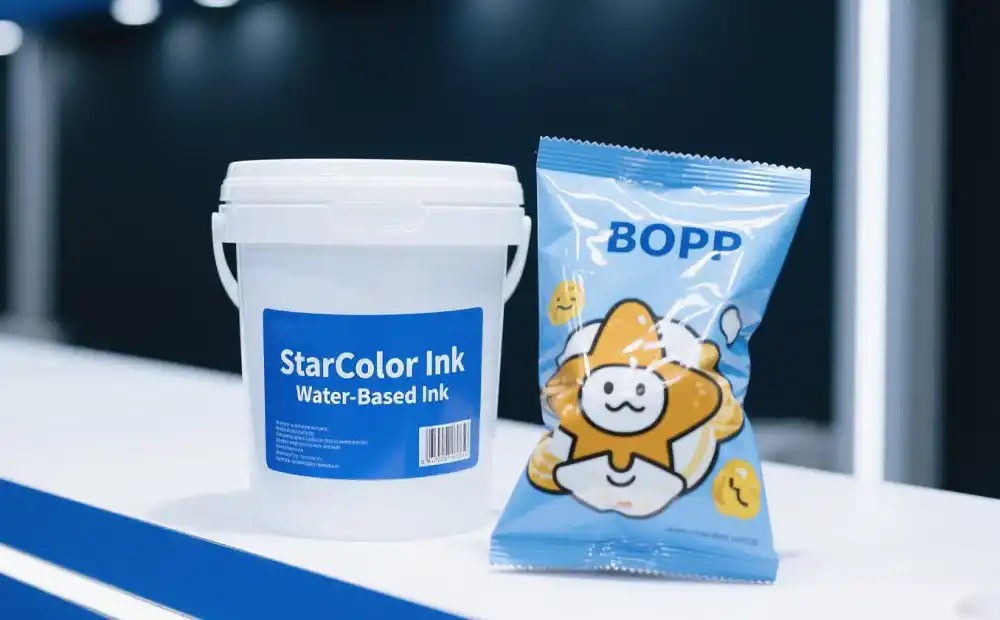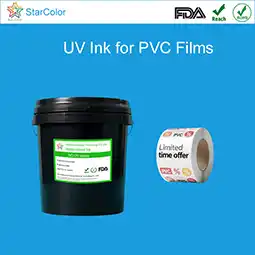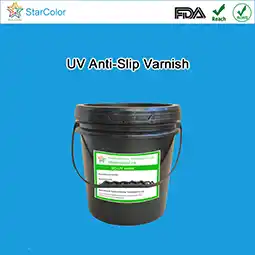Boosting Rub and Scratch Resistance in Water Based Flexo Printing
Date: Aug 18 2025 From: Star Color Views:
Water-based inks are widely used in food packaging and consumer goods labels due to their low VOC emissions and regulatory compliance with environmental standards. However, poor rub resistance and easy surface scratching have become key bottlenecks restricting water-based flexographic printing from expanding into high-end markets.
Statistics show that packaging waste caused by insufficient rub resistance can reach 5%–8%, particularly during transportation and stacking, where issues such as scuffing, ink rub-off, and substrate exposure frequently occur.
This article analyzes the root causes and provides a systematic technical roadmap to improve the rub and scratch resistance of water-based flexographic printing. It explores three dimensions: ink formulation optimization, substrate pretreatment, and process parameter control—backed by test data and practical case studies for actionable solutions.
1. Root Cause Analysis
The rub resistance of water-based flexo prints essentially depends on the combined properties of film hardness, adhesion, and flexibility. The performance gap mainly stems from three factors:
-
Insufficient film density
Since water-based inks use water as the dispersion medium, evaporation during drying causes shrinkage and the formation of micro-voids. Traditional water-based films typically reach only 70%–80% of the density of solvent-based inks, leaving a porous microstructure. Pigment particles easily detach under friction. Tests show: for every 10% increase in film density, rub resistance cycles increase by over 30%. -
Resin hardness–adhesion imbalance
Acrylic resins are widely used for their eco-friendly profile, but a single resin system struggles with the trade-off between hardness and flexibility. Low crosslink density results in scratches from fingernails or sharp objects, while excessive hardness reduces adhesion, leading to film delamination from the substrate. -
Process-dependent film formation
Drying conditions—temperature and speed—directly affect curing. Incomplete drying lowers hardness by 20%–30%. Excessive drying temperatures, on the other hand, cause premature resin aging, cracking, and poorer rub resistance.
2. Ink Formulation Optimization
Formulation is the core determinant of rub resistance. Improvements require resin system design, additive synergy, and crosslinking reinforcement to achieve films with high hardness, strong adhesion, and wear resistance.
-
Hybrid resin systems
-
Resin selection: Replace single acrylic resins with polyurethane–acrylic hybrid systems. Polyurethane improves flexibility and adhesion, while acrylic provides hardness and chemical resistance. When blended, film hardness can be raised from HB to 2H, while maintaining crack-free 180° bending.
Starcolor Ink’s test data: rub resistance under 500 g load increased from 200 cycles to 450 cycles with hybrid resin films. -
Nano reinforcement: Adding nanoscale silica (SiO₂) or alumina (Al₂O₃) fills micro-voids and reduces friction. For example, 3% silica addition reduced surface roughness from 0.8 μm to 0.3 μm, improving scratch resistance grade from 2 to 4.
-
-
Functional additives
-
Wax synergy: Micronized polyethylene wax or PTFE wax (5%–8%) dispersed in the ink forms a lubricating surface layer, reducing friction coefficient by 30%–40% without affecting gloss.
-
Crosslinking agents: Isocyanate or epoxy crosslinkers react with resins during drying, building a 3D network. Crosslinked films showed 50% higher solvent resistance, and after immersion in 60°C hot water for 30 minutes, rub resistance retention remained above 90%.
-
3. Substrate Pretreatment
Film performance depends not only on the ink itself but also on adhesion strength to the substrate. Without proper surface preparation, films may peel off entirely. Pretreatment improves ink–substrate bonding.
-
Film substrates (BOPP, PET, PE)
-
Corona treatment: Surface tension should reach 38–42 dyn/cm. Every 2 dyn/cm increase enhances adhesion by 15%.
-
Chemical primers: Applying a 0.5–1 μm water-based adhesion promoter improves peel strength from 1.5 N/15 mm to 3.5 N/15 mm.
-
-
Paper substrates
-
Primer coating: On rough kraft or corrugated board, a water-based primer fills pores and levels the surface. This improves rub resistance by 30% while reducing ink absorption and waste.
-
Moisture control: Paper moisture content should remain at 6%–8%. Excess moisture causes fiber swelling and cracking; too low moisture increases brittleness and ink dusting during rub.
-
4. Process Parameter Control
Optimized press and drying conditions are crucial for achieving dense, defect-free ink films.
-
Drying curve optimization
-
Three-stage drying:
-
Stage 1: 40–50°C, remove ~70% surface water, prevent bubbling.
-
Stage 2: 60–70°C, promote crosslinking, resin achieves >80% crosslink density.
-
Stage 3: 50–60°C, slow final curing, reducing internal stress.
Compared to single-temperature drying, gradient drying increases crosslink density by 25% and rub resistance by 40%.
-
-
Humidity control: Use low-humidity air to accelerate evaporation and avoid surface skinning that traps moisture inside the film.
-
-
Printing pressure & ink film thickness
-
Pressure: Maintain 1.2–1.8 bar, fluctuations ≤0.1 bar. Digital valves ensure consistent transfer and avoid uneven ink layers.
-
Film thickness: 1–2 μm for fine graphics, 2–3 μm for solid areas.
-
5. Case Study: Rub Resistance Improvement in Seasoning Label Printing
A packaging converter in Guangdong, China, producing BOPP labels for seasoning bottles, faced complaints due to poor rub resistance. Customer rejection rate reached 12%.
Improvement measures:
-
Ink: Polyurethane–acrylic hybrid resin (3:7), with 3% nanosilica, 6% polyethylene wax, and 2% crosslinker.
-
Substrate: Corona treatment raised surface tension to 40 dyn/cm, followed by a 0.8 μm adhesion promoter layer.
-
Process: Adjusted drying curve to 45°C–65°C–55°C, pressure stabilized at 1.5 bar, ink thickness at 2 μm.
-
Post-treatment: Applied 1.5 μm water-based overprint varnish.
Results:
-
Rub resistance (500 g load) improved from 150 to 600 cycles.
-
Complaint rate dropped from 12% to 0.5%.
-
Waste reduced from 8% to 1.2%.
-
Monthly savings: approx. USD 7,000.
Conclusion
Enhancing rub and scratch resistance in water-based flexographic printing requires a three-pronged strategy:
-
Resin hybridization and nano-modification for stronger films,
-
Substrate pretreatment to secure adhesion,
-
Process optimization to reduce film defects, supplemented with protective coatings if needed.
With these advancements, water-based flexographic printing can fully meet the durability demands of most packaging applications—delivering an eco-friendly solution without compromising performance.
 RU
RU EN
EN CN
CN















